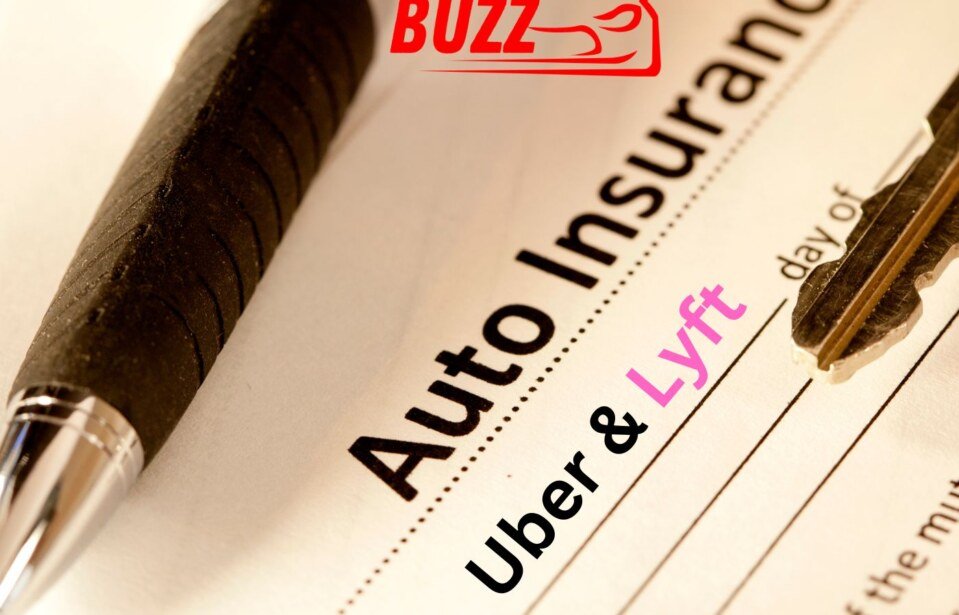As a rideshare driver for Uber or Lyft, understanding insurance coverage is essential to protect yourself, your passengers, and your vehicle. Uber and Lyft insurance works differently from personal auto insurance, and knowing how these rideshare companies’ coverage interacts with your personal policy is crucial. In this guide, we’ll explore how Uber and Lyft insurance works and the importance of rideshare insurance for drivers. We’ll also address common questions and explain the key points you need to know to stay fully protected on the road.
How Uber and Lyft Insurance Works
Both Uber and Lyft offer tiered insurance systems that kick in depending on your driving status. These tiers are based on whether you’re waiting for a ride request, en route to pick up a passenger, or actively transporting a passenger. Here’s how the insurance coverage works for each phase of your driving:
1. Offline or App Off: Personal Insurance Only
When your rideshare app is turned off, only your personal auto insurance is in effect. During this time, Uber and Lyft insurance does not apply.
- What You Need: You are responsible for ensuring that your personal auto insurance meets the minimum coverage requirements in your state.
2. Waiting for Ride Requests: Limited Liability Coverage
If your app is on but you haven’t yet accepted a ride (Period 1), Uber and Lyft provide limited liability coverage. This phase includes minimal protection compared to when you’re actively transporting passengers.
- Liability Limits:
- $50,000 per person for bodily injury
- $100,000 per accident for bodily injury
- $25,000 for property damage
This liability coverage only applies if your personal insurance does not cover the incident.
3. En Route to Pickup or During a Ride: Full Coverage
Once you accept a ride request and are en route to pick up the passenger (Period 2) or transporting them (Period 3), Uber and Lyft insurance provides the most comprehensive coverage, including:
- $1 million in third-party liability coverage
- Uninsured/underinsured motorist bodily injury coverage in case you’re hit by a driver with insufficient insurance.
- Contingent collision and comprehensive coverage (only if you have similar coverage on your personal policy). A deductible applies ($2,500 for Lyft, $1,000 for Uber).
The Importance of Rideshare Insurance
While Uber and Lyft insurance offer substantial coverage in some phases, there are significant gaps—especially during Period 1, when you’re waiting for ride requests. Many personal auto policies exclude coverage while ridesharing, so you could be left without protection during this phase. This is where rideshare insurance becomes crucial.
Personal Auto Policy Exclusions
Most personal auto insurance policies contain exclusions for “driving for hire.” If you’re driving for Uber or Lyft and get into an accident, your personal insurer could deny the claim. This is why getting rideshare insurance is essential for rideshare drivers.
Rideshare Insurance: Filling the Gaps
Rideshare insurance bridges the gap between your personal auto policy and the coverage provided by Uber and Lyft insurance. It ensures that you’re fully protected during all phases of driving, especially Period 1. Most major insurers now offer rideshare insurance, extending your personal policy to cover periods when Uber and Lyft’s insurance is limited or non-existent.
What Does Rideshare Insurance Cover?
- Period 1 Coverage: Extends your personal liability coverage while you’re waiting for ride requests.
- Collision and Comprehensive Coverage: Reduces or eliminates the deductibles that Uber and Lyft require in the event of a collision.
- Gap Coverage: Fills any coverage gaps between your personal policy and Uber and Lyft insurance.
How to Choose the Right Rideshare Insurance
When selecting rideshare insurance, consider these factors to ensure you get the best coverage:
- Compare Deductibles: Some rideshare policies may offer lower deductibles for accidents that occur while driving for Uber or Lyft.
- Check Coverage Limits: Ensure that your rideshare policy offers adequate liability, collision, and comprehensive coverage across all driving phases.
- Look for Flexible Policies: Some insurers provide seamless coverage that allows you to switch between personal driving and rideshare driving without gaps.
Popular insurers offering rideshare insurance include:
- State Farm
- Geico
- Progressive
- Allstate
- Farmers
What to Do in the Event of an Accident
If you’re involved in an accident while driving for Uber or Lyft, here are the steps to follow:
- Document the Scene: Take photos and gather contact information from all involved parties.
- Contact Law Enforcement: File a police report, which will be required for your insurance claim.
- Report the Incident: Notify both your personal insurer and Uber or Lyft.
- Work with Insurance Adjusters: Uber, Lyft, and your personal insurance provider will work together to determine liability and handle the claim.
Key Points to Remember
- Rideshare Insurance is a Must: Personal auto insurance often doesn’t cover rideshare activities, so you’ll need a rideshare insurance policy to protect yourself during all stages of your driving.
- Uber and Lyft Insurance Gaps: There are gaps in coverage, especially during Period 1, when you’re waiting for ride requests. Without rideshare insurance, you might be responsible for any damages or liability during this time.
- Choose the Right Coverage: Compare policies to find one that offers comprehensive protection and reasonable deductibles.
Conclusion
Understanding Uber and Lyft insurance is critical for rideshare drivers. While the companies provide some coverage, it often leaves gaps that could expose you to financial risk—especially during the period when you’re waiting for ride requests. Rideshare insurance fills these gaps and ensures that you’re fully protected at all times. To safeguard yourself on the road and avoid unexpected out-of-pocket expenses, investing in rideshare insurance is essential. By staying informed and choosing the right policy, you can drive with confidence, knowing that you’re covered no matter what phase of the ride you’re in.





Leave a comment